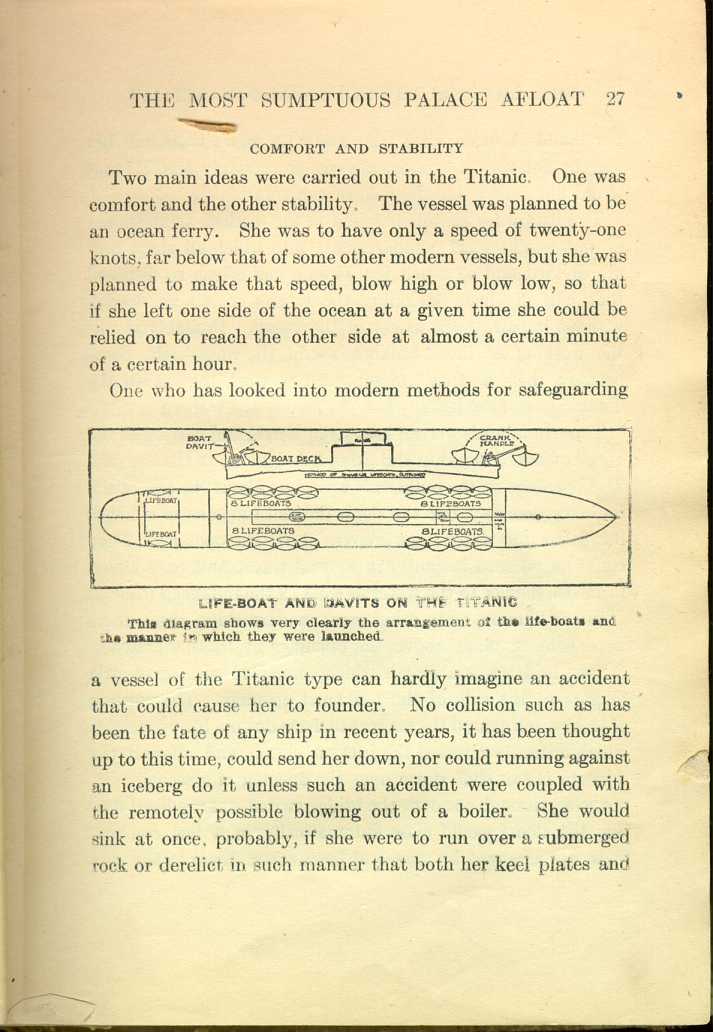COMFORT AND STABILITY
Two main ideas were carried out in the Titanic. One was comfort and the other stability. The vessel was planned to be an ocean ferry. She was to have only a speed of twenty-one knots, far below that of some other modern vessels, but she was planned to make that speed, blow high or blow low, so that if she left one side of the ocean at a given time she could be relied on to reach the other side at almost a certain minute of a certain hour.
One who has looked into modern methods for safeguarding

LIFE-BOAT AND DAVITS ON THE TITANIC
[Description:
Diagram of the Titanic, showing the arrangement of the life-boats.
]
This diagram shows very clearly the arrangement of the life-boats and
the manner in which they were launched.
The reason for all this is found in the modern arrangement of water-tight steel compartments into which all ships now are divided and of which the Titanic had fifteen so disposed that half of them, including the largest, could be flooded without impairing the safety of the vessel. Probably it was the working of these bulkheads and the water-tight doors between them as they are supposed to work that saved the Titanic from foundering when she struck the iceberg.
These bulkheads were of heavy sheet steel and started at the very bottom of the ship and extended right up to the top side. The openings in the bulkheads were just about the size of the ordinary doorway, but the doors did not swing as in a house, but fitted into water-tight grooves above the opening. They could be released instantly in several ways, and once closed formed a barrier to the water as solid as the bulkhead itself.
In the Titanic, as in other great modern ships, these doors were held in place above the openings by friction clutches. On the bridge was a switch which connected with an electric magnet at the side of the bulkhead opening. The turning of this switch caused the magnet to draw down a heavy weight, which instantly released the friction clutch, and allowed the door to fall or slide down over the opening in a second. If, however, through accident the bridge switch was rendered useless the doors would close automatically in a few seconds. This was arranged by means of large metal floats at the side
It was said of the Titanic that liner compartments could be flooded as far back or as far forward as the engine room and she would float, though she might take on a heavy list, or settle considerably at one end. To provide against just such an accident as she is said to have encountered she had set back a good distance from the bows an extra heavy cross partition known as the collision bulkhead, which would prevent water getting in amidships, even though a good part of her bow should be torn away. What a ship can stand and still float was shown a few years ago when the Suevic of the White Star Line went on the rocks on the British coast. The wreckers could not move the forward part of her, so they separated her into two sections by the use of dynamite, and after putting in a temporary bulkhead floated off the after half of the ship, put it in dry dock and built a new forward part for her. More recently the battleship Maine, or what was left of her, was floated out to sea, and kept on top of the water by her water-tight compartments only.